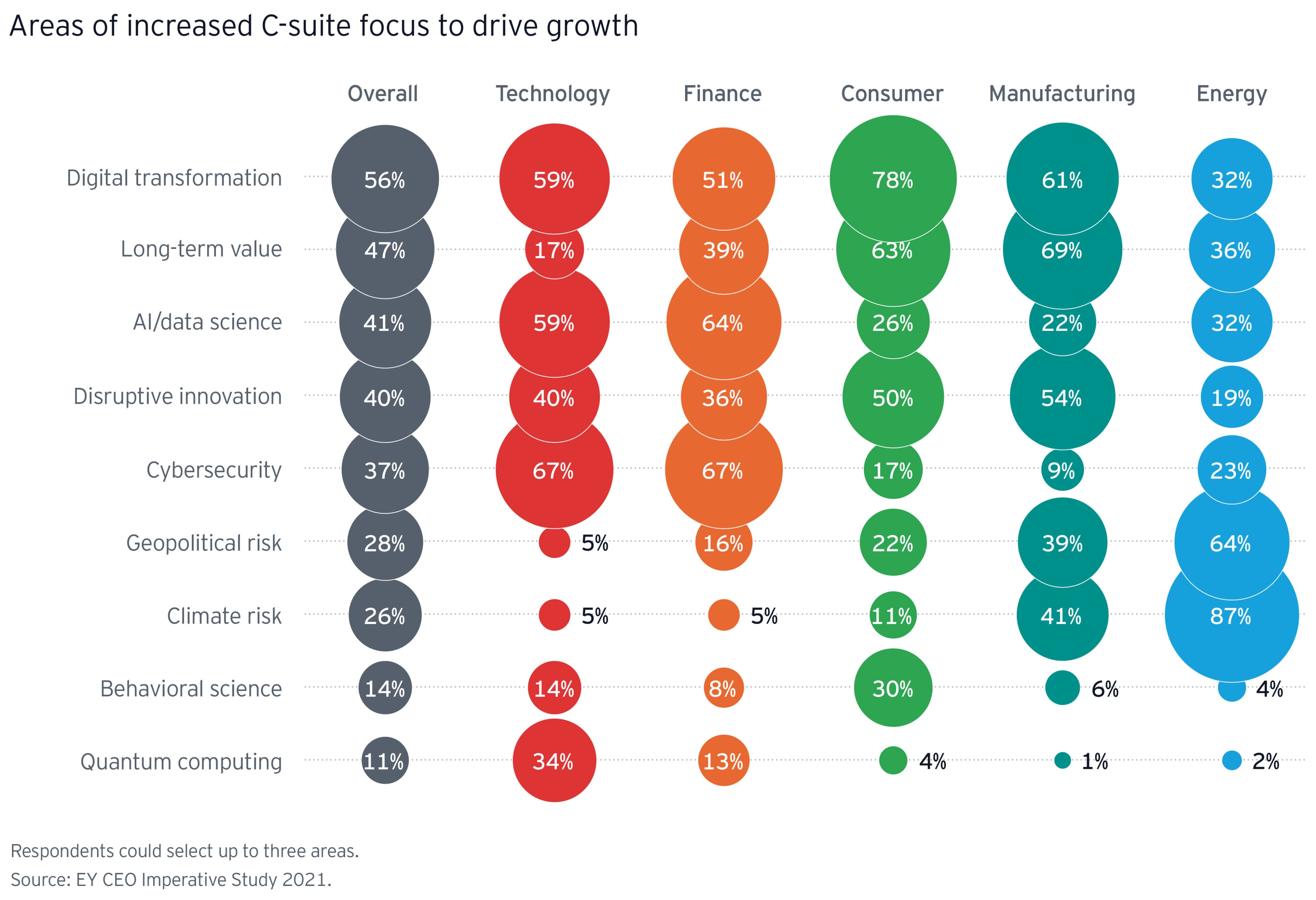Geopolitics and technology are inseparably intertwined in today’s geostrategic environment, but many CEOs who focus on digital transformation are paying comparatively little attention to geopolitics.
According to the EY CEO Imperative Study, 63% of Forbes Global 2000 chief executives view technology and digital innovation as one of the top trends impacting their company. And digital transformation ranks as the top business concern among CEOs. However, the same CEOs ranked geopolitics last in terms of trends impacting their company – and only 28% point to political risk management as a top business concern.
The impact of this disconnect could be considerable. As a CEO, you need to have a full grasp of the geopolitical risks that will impact your organization if you want your technology adaptation and digital transformation plans to succeed. Your organization’s ability to thrive depends on it. Indeed, technology and the geopolitics of trade are two of the five themes EY teams have highlighted as critical to purpose-led growth.
The CEO Imperative series addresses critical issues and actions to help CEOs reframe the future of their organizations. As part of that reframing, addressing these four geopolitical risks should be a strategic priority in your technology and digital innovation agenda:
1. Cybersecurity risks
Cybersecurity is one of the clearest examples of the interconnection between technology and geopolitics. Recent high-profile, large-scale hacks appeared to target US Government intellectual property and intelligence. But the effects were far wider because the attackers hacked widely used software, exposing tens of thousands of companies and government agencies, and revealing back doors other hackers can infiltrate.
Geopolitically driven cyberattacks can have significant implications for cybersecurity, risk management and digital transformation strategy. While no company is immune to cyberattacks, companies with strong cyber defenses and data protection systems, and those with employees that exercise good cyber hygiene, are likely to be less at risk.
2. Industrial policy risks
Governments are increasingly using industrial policy to promote self-sufficiency in strategic technologies, driving geopolitical competition. For example, US President Joe Biden is pushing to expand domestic production and improve supply chain resiliency for large-capacity batteries, semiconductors, and mineral inputs critical to digital technologies. The Chinese government is also prioritizing self-reliance in key technologies, providing incentives for domestic production of semiconductors. And seeking to bolster the bloc’s digital transformation, the EU has offered production targets for semiconductors, a plan for production of its first quantum computer by 2025 and support for expanding 5G infrastructure.
Companies may have to contend with governments preventing foreign companies from competing in certain areas of a domestic market. And competing standards for 5G, the internet and other technologies could create a more fragmented and networked, rather than global, digital economy.
While companies should still be able to operate across these different networks, CEOs should expect diverging technological standards to increase operating costs.


